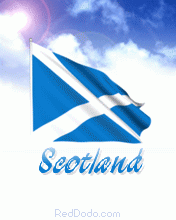Newbie
June 2015 - Jun 18, 2015 22:17:55 GMT
|
Post by farmboy on Jun 18, 2015 22:30:57 GMT
Just found this today, June 18th, outside Spokane, WA. I see 3 airplane shadows but only see two airplanes. This is Airway Heights, Spokane, WA.

Added to All Aircraft in Flight Collection (When Updated) See Here |
|
March 2015 - Jun 1, 2021 12:34:27 GMT
|
Post by NormB on Jun 19, 2015 1:44:20 GMT
Just found this today, June 18th, outside Spokane, WA. I see 3 airplane shadows but only see two airplanes. This is Airway Heights, Spokane, WA.
Hi Farmboy Welcome to the nGEC
There are quite a few examples of aircraft shadows with no aircraft showing in the imagery
Your find will be added to the collection in Due course |
|
Master Guide
March 2015 - Apr 14, 2022 20:01:57 GMT
|
Post by frankmcvey (Angel) on Jun 19, 2015 12:05:29 GMT
Hi, Farmboy, and welcome. Nice find - looks like a Boeing E6B Mercury on final approach into Fairchild AFB. It's a close cousin of the KC-135 tanker aircraft, with a slightly different wing shape and a distinctive hump on its back. I don't think we've seen one of those yet in GE. The decreasing distance between the shadow and the aircraft shows that he's descending. Boeing E6B Mercury at Mojave, photo courtesy Wiki I say "one", because there is only one aircraft here, showing multiple images. The Air Traffic Controllers at Fairchild would have to be very drunk or very daft to allow two (or more) aircraft so close together in the landing pattern! The reason for the multiple images? Well it's because this is an aerial photograph, rather than a satellite (you can tell that by the higher quality and, if you look closely at the hangars at Fairchild, you can actually see the south-facing walls of the hangars. This means that the photo is a slightly oblique shot. Satellite photos are taken from so high up that their viewing angle is truly vertical, so you never see the walls of buildings, only the roofs) The way the multiple images thing works is like this: Imagine you are flying the photographic aircraft. Far below you, you see another aircraft. If you manouevre your aircraft so that it is flying in exactly the same direction and speed, and it's positioned exactly above the other aircraft, every time your camera automatically takes a photo, it will capture the image of the aircraft immediately below you. If you did this for a long time, your final images would show the ground beneath you as normal, but when you joined all the separate photos together to form the aerial map, you'd see dozens, if not hundreds, of images of your target aircraft, all close together and chasing each other. That's pretty much what's happened here, except that the camera aircraft is flying at a slightly different speed and heading to the target aircraft, so it only manages to capture 3 instances of the shadow and two instances of the aircraft, before the latter moves out of the camera's field of view. The reason you don't see it in satellite images, is because the satellite moves much faster than an aircraft; so it'll only capture one image before it has moved on, far in front of the much slower target aircraft. Interesting find - keep them coming!  Cheers, Frank Note - I edited your post to add a placemark - people are much more likely to view your finds if you give them a placemark to save them searching for it themselves! It's quite easy to add a placemark - see here. |
|




 Norm - Christchurch, New Zealand.
Norm - Christchurch, New Zealand.


